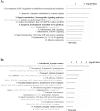Whole genome expression profiling associates activation of unfolded protein response with impaired production and release of epinephrine after recurrent hypoglycemia
- PMID: 28234964
- PMCID: PMC5325535
- DOI: 10.1371/journal.pone.0172789
Whole genome expression profiling associates activation of unfolded protein response with impaired production and release of epinephrine after recurrent hypoglycemia
Erratum in
-
Correction: Whole genome expression profiling associates activation of unfolded protein response with impaired production and release of epinephrine after recurrent hypoglycemia.PLoS One. 2017 Mar 8;12(3):e0173839. doi: 10.1371/journal.pone.0173839. eCollection 2017. PLoS One. 2017. PMID: 28273145 Free PMC article.
Abstract
Recurrent hypoglycemia can occur as a major complication of insulin replacement therapy, limiting the long-term health benefits of intense glycemic control in type 1 and advanced type 2 diabetic patients. It impairs the normal counter-regulatory hormonal and behavioral responses to glucose deprivation, a phenomenon known as hypoglycemia associated autonomic failure (HAAF). The molecular mechanisms leading to defective counter-regulation are not completely understood. We hypothesized that both neuronal (excessive cholinergic signaling between the splanchnic nerve fibers and the adrenal medulla) and humoral factors contribute to the impaired epinephrine production and release in HAAF. To gain further insight into the molecular mechanism(s) mediating the blunted epinephrine responses following recurrent hypoglycemia, we utilized a global gene expression profiling approach. We characterized the transcriptomes during recurrent (defective counter-regulation model) and acute hypoglycemia (normal counter-regulation group) in the adrenal medulla of normal Sprague-Dawley rats. Based on comparison analysis of differentially expressed genes, a set of unique genes that are activated only at specific time points after recurrent hypoglycemia were revealed. A complementary bioinformatics analysis of the functional category, pathway, and integrated network indicated activation of the unfolded protein response. Furthermore, at least three additional pathways/interaction networks altered in the adrenal medulla following recurrent hypoglycemia were identified, which may contribute to the impaired epinephrine secretion in HAAF: greatly increased neuropeptide signaling (proenkephalin, neuropeptide Y, galanin); altered ion homeostasis (Na+, K+, Ca2+) and downregulation of genes involved in Ca2+-dependent exocytosis of secretory vesicles. Given the pleiotropic effects of the unfolded protein response in different organs, involved in maintaining glucose homeostasis, these findings uncover broader general mechanisms that arise following recurrent hypoglycemia which may afford clinicians an opportunity to modulate the magnitude of HAAF syndrome.
Conflict of interest statement
Figures









Similar articles
-
Mechanisms of hypoglycemia-associated autonomic failure and its component syndromes in diabetes.Diabetes. 2005 Dec;54(12):3592-601. doi: 10.2337/diabetes.54.12.3592. Diabetes. 2005. PMID: 16306382 Review.
-
Partial blockade of nicotinic acetylcholine receptors improves the counterregulatory response to hypoglycemia in recurrently hypoglycemic rats.Am J Physiol Endocrinol Metab. 2014 Oct 1;307(7):E580-8. doi: 10.1152/ajpendo.00237.2014. Epub 2014 Aug 12. Am J Physiol Endocrinol Metab. 2014. PMID: 25117409 Free PMC article.
-
Repetitive hypoglycemia reduces activation of glucose-responsive neurons in C1 and C3 medullary brain regions to subsequent hypoglycemia.Am J Physiol Endocrinol Metab. 2019 Aug 1;317(2):E388-E398. doi: 10.1152/ajpendo.00051.2019. Epub 2019 Apr 23. Am J Physiol Endocrinol Metab. 2019. PMID: 31013147 Free PMC article.
-
Hypoglycemia in diabetes: pathophysiological mechanisms and diurnal variation.Prog Brain Res. 2006;153:361-5. doi: 10.1016/S0079-6123(06)53021-3. Prog Brain Res. 2006. PMID: 16876586 Review.
-
Posttranscriptional regulation of adrenal TH gene expression contributes to the maladaptive responses triggered by insulin-induced recurrent hypoglycemia.Physiol Rep. 2015 Feb 22;3(2):e12307. doi: 10.14814/phy2.12307. Print 2015 Feb 1. Physiol Rep. 2015. PMID: 25713330 Free PMC article.
Cited by
-
Glucose Variability: How Does It Work?Int J Mol Sci. 2021 Jul 21;22(15):7783. doi: 10.3390/ijms22157783. Int J Mol Sci. 2021. PMID: 34360550 Free PMC article. Review.
-
Correction: Whole genome expression profiling associates activation of unfolded protein response with impaired production and release of epinephrine after recurrent hypoglycemia.PLoS One. 2017 Mar 8;12(3):e0173839. doi: 10.1371/journal.pone.0173839. eCollection 2017. PLoS One. 2017. PMID: 28273145 Free PMC article.
-
Early life microbiome disbalance impacts neuroendocrine outcomes in pre-pubertal mice in a sexually dimorphic manner.Front Microbiol. 2025 Jun 20;16:1504513. doi: 10.3389/fmicb.2025.1504513. eCollection 2025. Front Microbiol. 2025. PMID: 40693139 Free PMC article.
-
Evaluation of folliculogenesis and oxidative stress parameters in type 1 diabetes mellitus women with different glycemic profiles.Endocrine. 2024 Sep;85(3):1131-1140. doi: 10.1007/s12020-024-03805-4. Epub 2024 Jun 6. Endocrine. 2024. PMID: 38842765
-
Recurrent hypoglycemia inhibits the counterregulatory response by suppressing adrenal activity.J Clin Invest. 2018 Aug 31;128(9):3866-3871. doi: 10.1172/JCI91921. Epub 2018 Aug 6. J Clin Invest. 2018. PMID: 30080182 Free PMC article.
References
-
- (1997) Hypoglycemia in the Diabetes Control and Complications Trial. The Diabetes Control and Complications Trial Research Group. Diabetes 46: 271–286. - PubMed
MeSH terms
Substances
LinkOut - more resources
Full Text Sources
Other Literature Sources
Medical
Molecular Biology Databases
Research Materials
Miscellaneous

